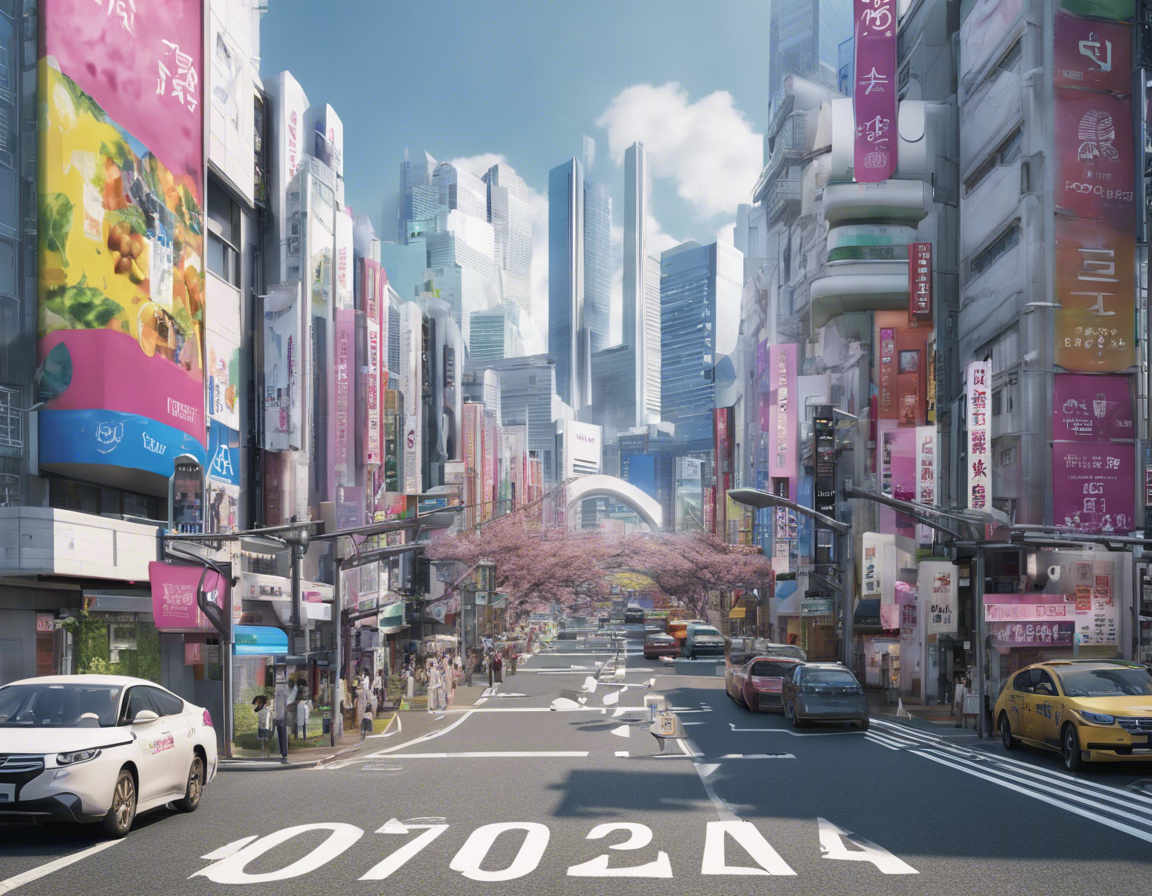
Sushi in Tokyo's Tsukiji Market:
Tokyo, a city that beautifully blends tradition with modernity, offers a culinary adventure like no other. One of the must-visit destinations for food lovers is the Tsukiji Market, renowned for its fresh seafood and vibrant atmosphere. This article explores the delights of sampling sushi at Tsukiji Market, alongside other engaging activities for couples and families, nightlife options, and essential travel tips.
A Brief History of Tsukiji Market:
Originally established in 1935, Tsukiji Market served as the largest wholesale fish market in the world. The inner auction area, famous for its tuna auctions, was relocated to Toyosu in 2018. However, the Tsukiji Outer Market remains a bustling hub for food lovers, offering a plethora of restaurants and street vendors that serve some of the freshest sushi in Tokyo. The market is not just about seafood; it’s a culinary paradise where visitors can sample a variety of Japanese delicacies, from green tea to bonito flakes.

Tsukiji Market, once the largest wholesale fish market in the world, has a rich and storied history that reflects the evolution of Tokyo itself. From its origins in the Edo period to its transformation into a bustling culinary hub, Tsukiji has played a vital role in Tokyo’s food culture and economy.
Origins and Early History:
The area now known as Tsukiji was originally constructed in 1657 as part of a land reclamation project following a devastating fire that destroyed much of Edo (modern-day Tokyo). The name “Tsukiji” translates to “constructed land,” indicating its origins as a man-made area on the banks of the Sumida River. Initially, Tsukiji was not a fish market but a residential area where samurai and merchants lived, selling goods like rice and firewood to the local population.
Development into a Fish Market:
The transformation of Tsukiji into a fish market began in the early 20th century. After the Great Kanto Earthquake in 1923, which destroyed much of Tokyo, the government relocated the existing Nihonbashi fish market to Tsukiji. This marked the beginning of Tsukiji’s identity as a major seafood trading hub. By 1935, the Tsukiji Fish Market officially opened, quickly becoming known as “Tokyo’s Kitchen” due to its vital role in supplying fresh seafood to the city.
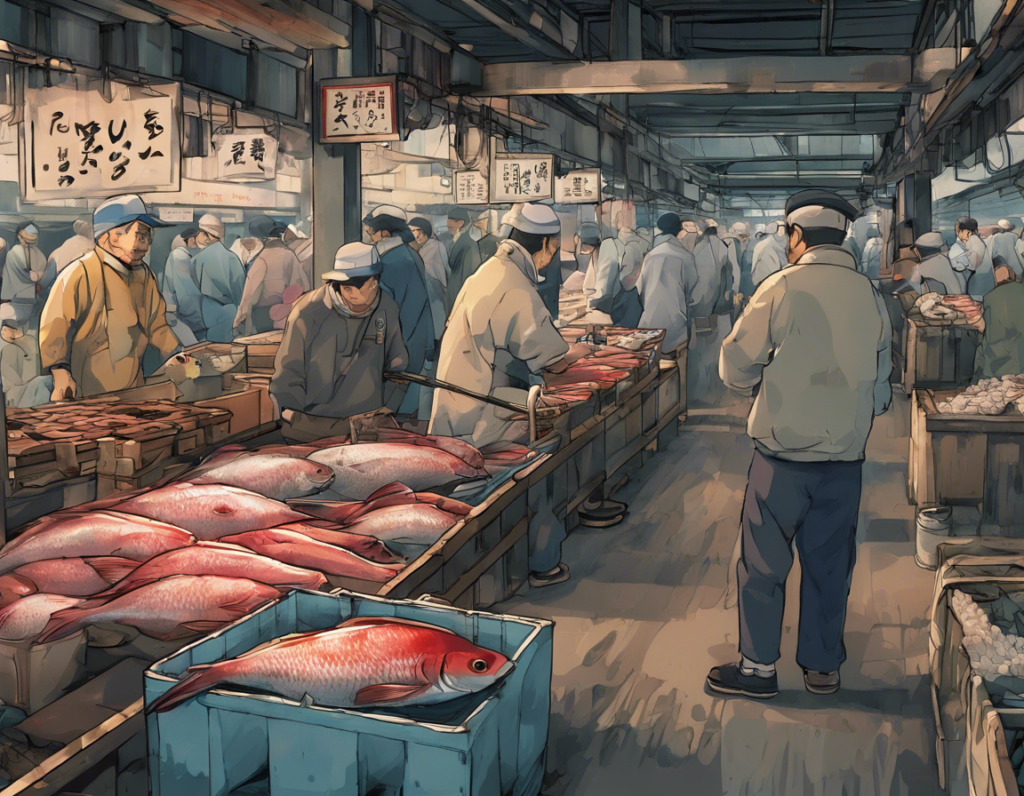
The Market’s Growth and Popularity
Throughout the years, Tsukiji Market flourished, especially after World War II when it became a central distribution point for seafood. The market was known for its lively atmosphere, with fishmongers and vendors selling a wide variety of seafood, including the famous tuna auctions that attracted tourists and chefs from around the world. The market became a symbol of Tokyo’s culinary scene, offering everything from sushi to street food delicacies.
The Move to Toyosu
In 2018, the inner wholesale market operations were moved to a new facility in Toyosu, just a few kilometers away. This transition was part of a long-planned relocation to modernize the market and improve food safety standards. Despite the move, the Tsukiji Outer Market remains vibrant, continuing to serve the public with numerous shops and restaurants that offer fresh seafood and traditional Japanese cuisine.
Tsukiji Today
Today, the Tsukiji Outer Market is a popular destination for both locals and tourists, featuring over 450 shops and eateries. Visitors can enjoy fresh sushi, seafood, and various culinary delights while exploring the lively market atmosphere. Although the inner market has relocated, Tsukiji continues to be a vital part of Tokyo’s food culture, attracting food lovers eager to experience its rich history and culinary offerings.
The history of Tsukiji Market is a testament to Tokyo’s resilience and adaptability. From its humble beginnings as a constructed land to its status as a culinary landmark, Tsukiji has evolved while maintaining its identity as a hub for fresh seafood and Japanese cuisine. Whether you’re a local or a visitor, Tsukiji remains an essential part of Tokyo’s gastronomic landscape, inviting everyone to explore its rich heritage and delicious offerings.
The Best Sushi Experience
Experiencing sushi in Tokyo is a culinary adventure that many food enthusiasts dream of, and the best sushi experience often leads them to Sushi Dai. Renowned for its exceptional quality and authentic atmosphere, Sushi Dai continues to be a top destination for sushi lovers. Here’s an in-depth look at what makes Sushi Dai and the sushi experience in Tokyo unforgettable.
Sushi Dai: A Culinary Icon
Sushi Dai, located at the Toyosu Market (previously at Tsukiji), is a Michelin-starred restaurant that has gained a reputation for its outstanding sushi. The restaurant opens early, typically at 5 AM, and serves until 2 PM. Given its popularity, diners often line up hours before opening to secure a spot. The experience of waiting in line, surrounded by fellow sushi enthusiasts, adds to the anticipation and excitement.
The Menu
At Sushi Dai, diners can choose between two main menus:
Omakase Menu: This “trust the chef” experience typically costs around ¥4,000 (approximately $40) and includes a selection of 10 pieces of nigiri sushi, showcasing the freshest fish of the day. Diners also receive a piece of rolled egg (tamago), miso soup, and a choice from the menu for an additional piece.
Jyou Menu: A more budget-friendly option, this menu is priced at around ¥2,600 (approximately $25) and features 6 pieces of nigiri, sushi rolls, and miso soup.
The omakase experience is particularly popular, as it allows chefs to showcase their skills and the day’s best catches. Diners can expect to savour a variety of fish, including tuna, yellowtail, and uni (sea urchin), all prepared with expert precision.
The Sushi Experience
The experience at Sushi Dai goes beyond just the food; it’s about the entire atmosphere. Here are some highlights:
Freshness: The sushi at Sushi Dai is renowned for its freshness. Fish is sourced directly from the nearby Toyosu Market, ensuring that every piece is of the highest quality.
Chef Interaction: The sushi chefs at Sushi Dai are not only skilled but also friendly and engaging. Diners often have the opportunity to watch the chefs at work, creating a sense of intimacy and connection with the culinary process.
Unique Flavors: Each piece of sushi is crafted with care, often requiring no additional soy sauce or condiments. The chefs use high-quality vinegars and seasonings, allowing the natural flavors of the fish to shine through.
Cultural Experience: Dining at Sushi Dai is not just about eating; it’s about immersing oneself in Japanese culture. The hustle and bustle of the market, combined with the lively interactions between chefs and customers, creates an authentic dining experience.
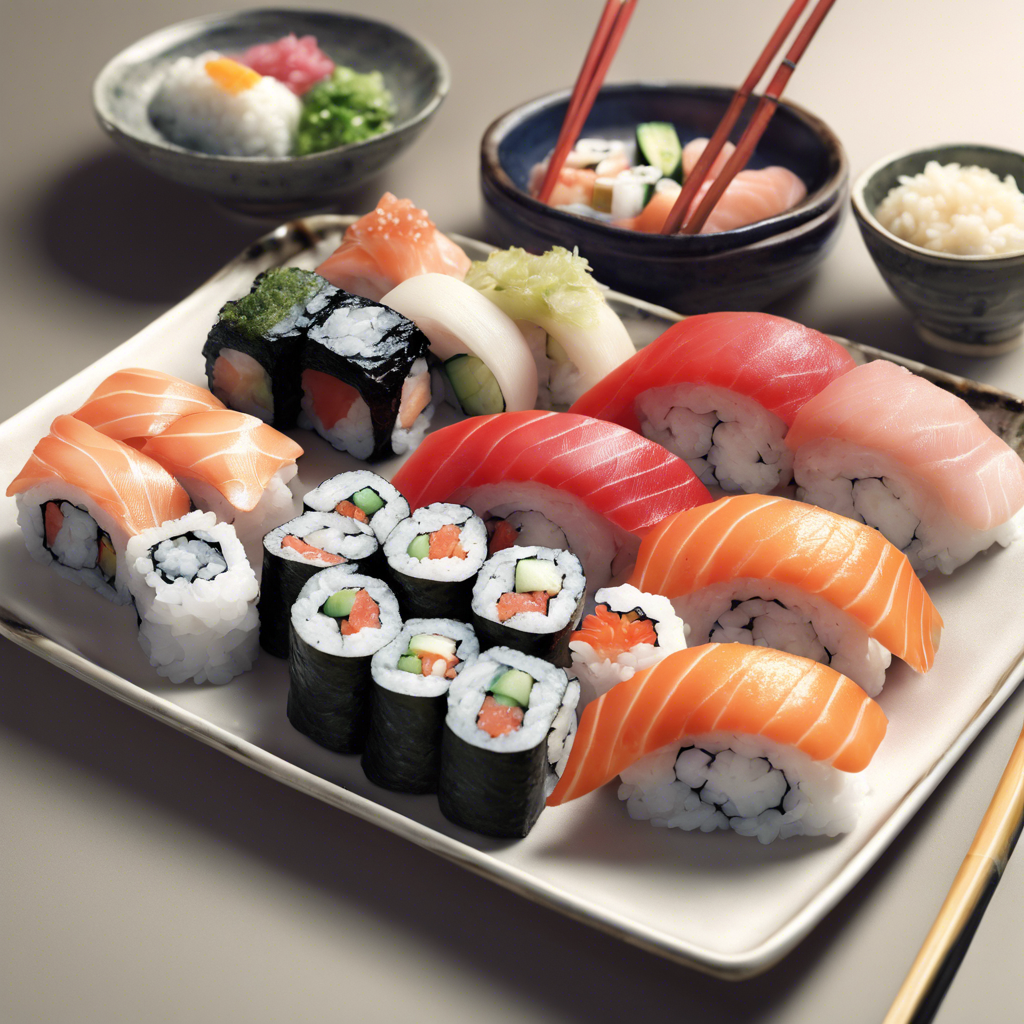
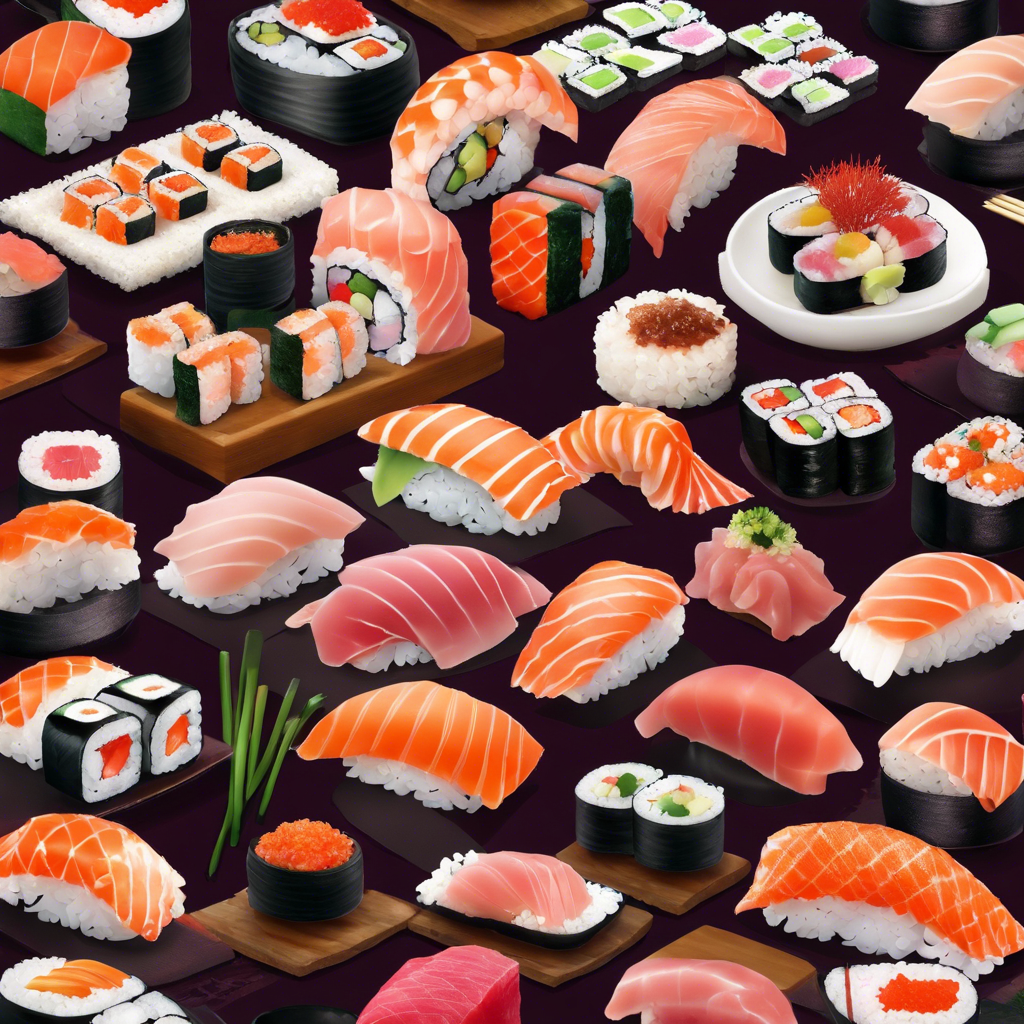
Tips for Visiting Sushi Dai:
To make the most of your visit to Sushi Dai, consider these tips:
Arrive Early: Given the popularity of Sushi Dai, arriving as early as possible is crucial. Many diners start lining up around 3 AM to ensure they get a seat.
Cash Only: Sushi Dai operates on a cash-only basis, so be sure to bring enough yen for your meal.
Be Patient: The wait can be long, often exceeding two hours, but many diners agree that the experience is worth it.
Dress Comfortably: While there’s no strict dress code, wearing comfortable clothing is advisable, especially if you plan to wait in line.
Engage with the Chefs: Don’t hesitate to ask questions or engage with the chefs. They appreciate interest in their craft and are often happy to share insights about the sushi.
Alternatives to Sushi Dai
If you find yourself unable to secure a spot at Sushi Dai, there are excellent alternatives in the Toyosu Market and the Tsukiji Outer Market, such as Daiwa Sushi. Both restaurants offer high-quality sushi and a similar dining experience, though Sushi Dai is often regarded as the best.
Conclusion
Sampling sushi at Sushi Dai is more than just a meal; it’s an experience that encapsulates the essence of Tokyo’s culinary culture. From the freshness of the fish to the skill of the chefs, every aspect of dining at Sushi Dai contributes to an unforgettable adventure. Whether you’re a seasoned sushi lover or a first-time visitor, the experience at Sushi Dai is sure to leave a lasting impression and perhaps even inspire a return trip to Tokyo.
10 Best Things for Couples to Do in Tokyo:
Tokyo offers a diverse array of romantic experiences for couples looking to create unforgettable memories together. From strolling through serene gardens to enjoying breathtaking city views, here are the 10 best things for couples to do in Tokyo:
1. Stroll through Shinjuku Gyoen National Garden
This beautiful park is perfect for a leisurely walk, especially during cherry blossom season. The lush greenery, traditional Japanese gardens, and picturesque ponds create a serene atmosphere ideal for couples to enjoy each other’s company.
2. Visit Tokyo Tower at Night
Experience the city skyline from a new perspective by visiting Tokyo Tower at night. The observation decks offer panoramic views of the illuminated city, making it a romantic spot for couples to take in the breathtaking scenery.
3. Explore Odaiba
This artificial island in Tokyo Bay is known for its stunning views of the Rainbow Bridge and the replica Statue of Liberty. Couples can enjoy a romantic stroll along the beach, visit the Odaiba Marine Park, or relax in one of the many cafes and restaurants overlooking the bay.
4. Enjoy a Dinner Cruise on Tokyo Bay
Take your romantic evening to the next level by embarking on a dinner cruise along Tokyo Bay. Savor delicious cuisine while taking in the illuminated city landmarks and enjoying each other’s company in a unique setting.
5. Visit Asakusa and Senso-ji Temple
Explore the historic Senso-ji Temple and wander the charming streets of Asakusa. The old-world atmosphere and traditional Japanese culture create a memorable experience for couples.
6. Sing Your Hearts Out at a Karaoke Night
Karaoke is a popular pastime in Japan, and it’s a fun activity for couples to enjoy together. Rent a private karaoke room and sing your hearts out in a lively atmosphere.
7. Experience Themed Cafes
Tokyo is known for its unique and themed cafes, offering couples a chance to immerse themselves in a whimsical setting. From cat cafes to maid cafes, there’s something for every couple to enjoy.
8. Relax at an Onsen or Spa
Unwind together at an onsen (hot spring) or a luxury spa for a rejuvenating experience. Many onsens offer private rooms or mixed-gender areas that require swimwear, making it a comfortable option for couples.
9. Explore Nightlife in Shibuya
Shibuya is known for its vibrant nightlife scene, with trendy bars and clubs catering to a variety of tastes. Couples can enjoy a night out on the town, taking in the lively atmosphere and making memories together.
10. Stroll through Illuminations
Tokyo offers stunning illuminations throughout the year, creating a magical atmosphere for couples. Take a romantic stroll through the illuminated streets and enjoy the festive ambiance together.
Tokyo is a city that beautifully blends tradition with modernity, offering couples a wide range of romantic experiences. From serene gardens to vibrant nightlife, there’s something for every couple to enjoy in this enchanting city.
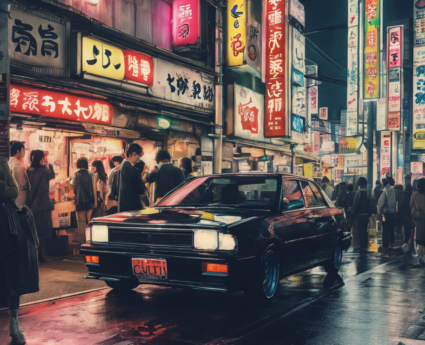

Nightlife and Best Nightclubs in Tokyo:
Tokyo’s nightlife scene is one of the most vibrant and diverse in the world, offering a wide range of clubs catering to various music preferences and styles. From high-energy dance clubs to intimate lounges, Tokyo has something for everyone. Here are some of the best nightclubs in Tokyo:
WOMB
Located in the heart of Shibuya, WOMB is one of Tokyo’s most iconic nightclubs. Known for its impressive sound system and international DJ lineups, WOMB attracts a lively crowd looking to dance the night away. The club features multiple floors and a spacious dance area, creating an electrifying atmosphere.
ageHa
ageHa is one of Tokyo’s largest nightclubs, situated in the Shiodome area. This massive venue features multiple dance floors, outdoor areas, and even a pool, making it a popular destination for those seeking a unique clubbing experience. ageHa hosts a variety of events, from electronic music festivals to themed parties.
Club Camelot
Club Camelot, located in Shibuya, is known for its stylish interior and energetic vibe. The club attracts a young, fashionable crowd and features a main dance floor as well as several VIP areas. Club Camelot is a great option for those looking to experience Tokyo’s trendy nightlife scene.
V2 Tokyo
V2 Tokyo, situated in the upscale Roppongi district, offers a luxurious clubbing experience. With stunning views of the city skyline, V2 Tokyo features a sophisticated atmosphere, VIP rooms, and a well-curated selection of cocktails and spirits. This club is perfect for those seeking a glamorous night out.
Contact
For those who prefer a more intimate and underground vibe, Contact is a must-visit. This smaller club focuses on showcasing emerging and underground DJs, creating a unique atmosphere for music enthusiasts. Contact attracts a discerning crowd looking to discover new sounds and artists.
Other Notable Mentions
ATOM Tokyo: Known for its lively weekday parties and three different floors, ATOM Tokyo is a popular choice for those looking to experience Shibuya’s nightlife.
Arty Farty: Located in Shinjuku, Arty Farty is a trendy club that attracts a fashionable crowd with its stylish interior and diverse music selection.
Classic Tokyo: Situated in the vibrant neighborhoods of Ueno and Asakusa, Classic Tokyo offers a unique nightlife experience with live DJ performances, dance shows, and a warm, welcoming atmosphere.
Tokyo’s nightlife scene is constantly evolving, with new clubs and events popping up regularly. Whether you’re looking for a high-energy dance club or a more intimate lounge, Tokyo has something to offer every nightlife enthusiast.
Top Restaurants and Cuisine in Tokyo:
Tokyo is a culinary paradise, offering a diverse array of dining experiences that cater to every palate and budget. From Michelin-starred restaurants to humble street food stalls, the city’s food scene is unparalleled. Here are some of the top restaurants and cuisines to explore in Tokyo:
Sushi
Sushi is undoubtedly one of the most iconic Japanese cuisines, and Tokyo is home to some of the best sushi restaurants in the world. Sukiyabashi Jiro, a Michelin-starred restaurant run by 94-year-old sushi master Jiro Ono, is considered one of the best sushi restaurants in the world. Other notable sushi spots include Sushi Saito, Sushi Yoshitake, and Sushi Mizutani.
Ramen
Ramen is a beloved comfort food in Japan, and Tokyo has no shortage of exceptional ramen shops. Tsuta, the world’s first Michelin-starred ramen restaurant, serves up delicious tonkotsu (pork bone broth) ramen. Nakiryu, known for its rich, creamy tonkotsu ramen, is another popular choice. Tsukemen, or dipping noodles, is also a must-try in Tokyo.
Tempura
Tempura, or lightly battered and deep-fried seafood and vegetables, is a Japanese specialty. Tempura Kondo, a Michelin-starred restaurant, offers expertly crafted tempura dishes using seasonal ingredients. Tsunahachi is another renowned tempura restaurant, known for its fresh seafood and crispy batter.
Yakitori
Yakitori, or grilled chicken skewers, is a popular izakaya (Japanese-style pub) food. Torishiki, a Michelin-starred yakitori restaurant, serves up expertly grilled chicken parts, from tender thighs to crunchy cartilage. Toritama is another excellent yakitori spot, known for its juicy, flavorful skewers.
Wagyu Beef
Japan is renowned for its high-quality wagyu beef, and Tokyo has several restaurants that showcase this premium ingredient. Kawamura, a Michelin-starred restaurant, offers a variety of wagyu dishes, from perfectly seared steaks to delicate carpaccio. Aragawa, known for its melt-in-your-mouth beef, is another top choice for wagyu enthusiasts.
Kaiseki
Kaiseki is a traditional multi-course Japanese dinner that showcases seasonal ingredients and culinary techniques. Kikunoi, a Michelin-starred restaurant, offers an exquisite kaiseki experience featuring beautifully presented dishes that highlight the flavors of each season. Hyotei, known for its elegant atmosphere and impeccable service, is another top kaiseki restaurant in Tokyo.
Tokyo’s food scene is constantly evolving, with new and innovative restaurants opening regularly. Whether you’re in the mood for classic Japanese cuisine or a unique fusion experience, Tokyo has something to satisfy every culinary craving.
Top 15 Things for Families to Do in Tokyo:
Tokyo is also a family-friendly destination with plenty of activities for all ages. Here are 15 family-friendly attractions:
Tokyo Disneyland: A magical experience for kids and adults alike.
Ueno Zoo: Home to giant pandas and a variety of other animals.
Ghibli Museum: A must-visit for fans of Studio Ghibli films.
Okinawa Churaumi Aquarium: Explore the wonders of marine life.
TeamLab Borderless: An interactive digital art museum that captivates visitors of all ages.
Asobono: An indoor play center with various activities for children.
Tokyo Skytree: Enjoy panoramic views of the city from the observation deck.
Nihonbashi Takashimaya: A shopping complex with a family-friendly atmosphere.
Yoyogi Park: A great spot for picnics and outdoor activities.
Legoland Discovery Center: A fun indoor attraction for Lego enthusiasts.
Tokyo Joypolis: An indoor amusement park with arcade games and rides.
Sumida Aquarium: Located in the Tokyo Skytree Town, it features stunning aquatic displays.
KidZania Tokyo: An interactive city where kids can try out various professions.
Tokyo Tower Aquarium: A unique aquarium experience located within the iconic tower.
Odaiba Seaside Park: A beach area perfect for family outings and picnics.
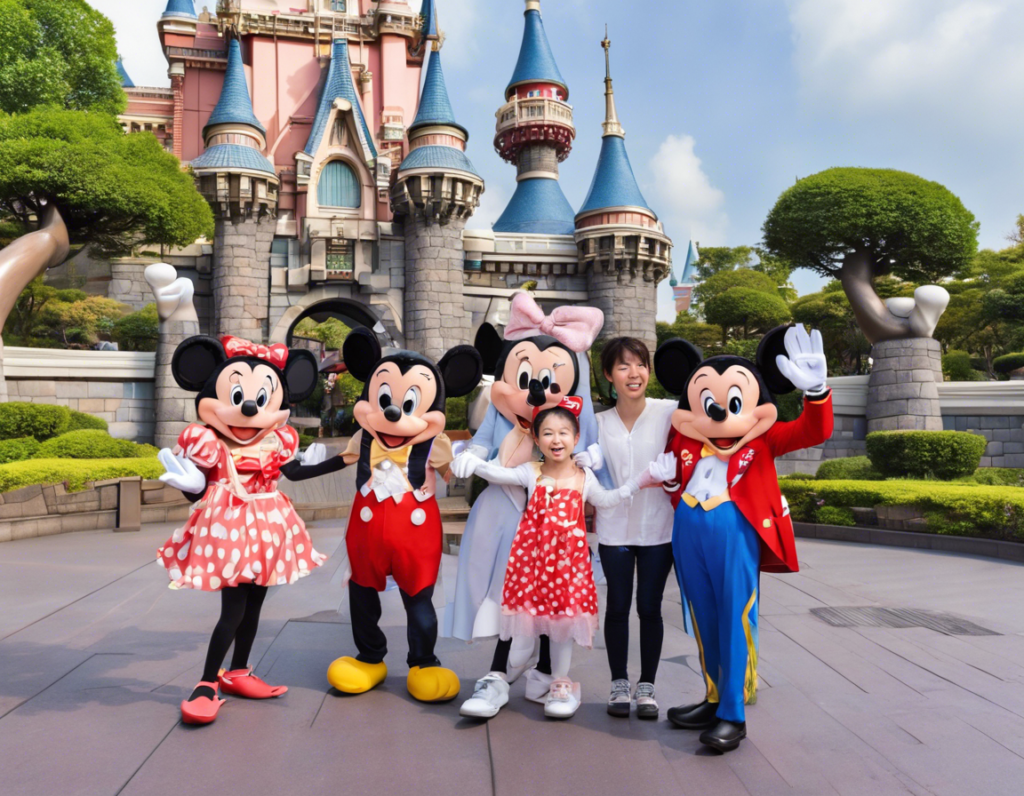
Transportation in Tokyo:
Tokyo has an extensive and efficient public transportation system that makes getting around the city a breeze. Here are the main modes of transportation and tips for using them:
Trains and Subways
The train and subway network is the backbone of Tokyo’s transportation system. The two main operators are:
JR East: Operates the JR Yamanote Line, a loop line that connects many of Tokyo’s major stations and neighbourhoods. JR East also runs several other lines, including the Chuo, Keihin-Tohoku, and Saikyo lines.
Tokyo Metro: Operates the city’s subway system, with 9 color-coded lines. Popular lines for tourists include the Ginza, Marunouchi, and Chiyoda lines.
Tips for using trains and subways:
Get a prepaid IC card like Suica or Pasmo. These can be used on almost all trains and subways in Tokyo and surrounding areas.
Look for English signage at stations. Most major stations have English maps and announcements.
Be aware of rush hour, typically 7-9 AM and 5-7 PM on weekdays. Trains can get very crowded during these times.
Buses
Tokyo has an extensive bus network operated by Toei and private companies. Buses are useful for reaching areas not well-served by trains and subways. Tips:
Fares are typically ¥210 for adults. Pay when boarding or use your IC card.
Look for English route maps at major bus stops.
Some buses, like the Toei 06 route, connect popular neighbourhoods.
Taxis
Taxis are widely available in Tokyo, especially in central areas. They are convenient for short trips or when traveling with luggage. Keep in mind:
Taxis are more expensive than trains and subways. Fares start at around ¥410 for the first 1.052 km.
Most taxis accept credit cards and IC cards.
Look for green, yellow, or black taxis. Avoid unlicensed “black taxis”.
Other Options
Bicycles: Tokyo is relatively flat, making cycling a good option for short trips. Many hotels offer bike rentals.
Water buses: Tokyo has several water bus routes along the Sumida River and Tokyo Bay. They offer scenic views but are slower than trains.
With a little preparation, navigating Tokyo’s transportation network is straightforward. Using a combination of trains, subways, and taxis will get you to most destinations efficiently.

Wildlife in Tokyo:

Despite being one of the largest urban areas in the world, Tokyo is home to a surprising variety of wildlife. The city’s parks, rivers, and even urban environments provide habitats for various species, both native and introduced. Here’s an exploration of the wildlife you might encounter in and around Tokyo.
Common Wildlife in Tokyo
Tanuki (Raccoon Dog)
The tanuki is a legendary creature in Japanese folklore, often depicted as a shapeshifter. In Tokyo, these animals can sometimes be spotted in parks and along rivers, particularly in areas like Suginami-ku. They are known for their playful behavior and are often seen rummaging through trash in search of food.Japanese House Bats
The Japanese house bat, or pipistrellus abramus, is commonly found in urban areas, especially during warm summer nights. These bats play a crucial role in controlling insect populations and can often be seen flying around parks and old buildings.Masked Palm Civets
Increasingly common in the outskirts of Tokyo, masked palm civets are nocturnal creatures known for their adaptability to urban environments. They have been known to enter homes and rummage through garbage, showcasing their cleverness and curiosity.Raccoons
Although less common than tanuki, raccoons can still be found in Tokyo, particularly in areas near the Imperial Palace. These nocturnal animals are notorious for their scavenging habits and can sometimes be seen foraging for food.Japanese Macaques
Known as the northernmost living monkeys in the world, Japanese macaques can be found in the wild in mountainous areas surrounding Tokyo, such as Mt. Takao. They are known for their social behavior and adaptability to various habitats.Snakes
Several species of snakes inhabit Tokyo, including the Japanese rat snake, which can grow up to two meters long. These snakes are generally non-aggressive and can often be found in parks and near rivers.Bears
While not common in the city itself, bears can be found in the more mountainous regions surrounding Tokyo, particularly in areas like Hachioji and Oku-Tama. Encounters are rare but possible for hikers in these areas.
Marine Life
Tokyo Bay is home to various marine species, including fish and crustaceans. The bay’s ecosystem is influenced by both urban development and conservation efforts, making it a unique area to explore marine wildlife.
Birdwatching
Tokyo is also a great place for birdwatching, with over 600 species recorded in Japan. Parks like Ueno Park and Shinjuku Gyoen are popular spots for observing migratory birds, especially during spring and autumn. Notable birds include the Japanese woodpecker and the green pheasant, Japan’s national bird.
Conservation Efforts
Despite the urbanization of Tokyo, there are ongoing efforts to protect and conserve wildlife. Parks and green spaces are maintained to provide habitats for native species, and various organizations work to raise awareness about the importance of biodiversity in urban settings.
Tips for Wildlife Observation:
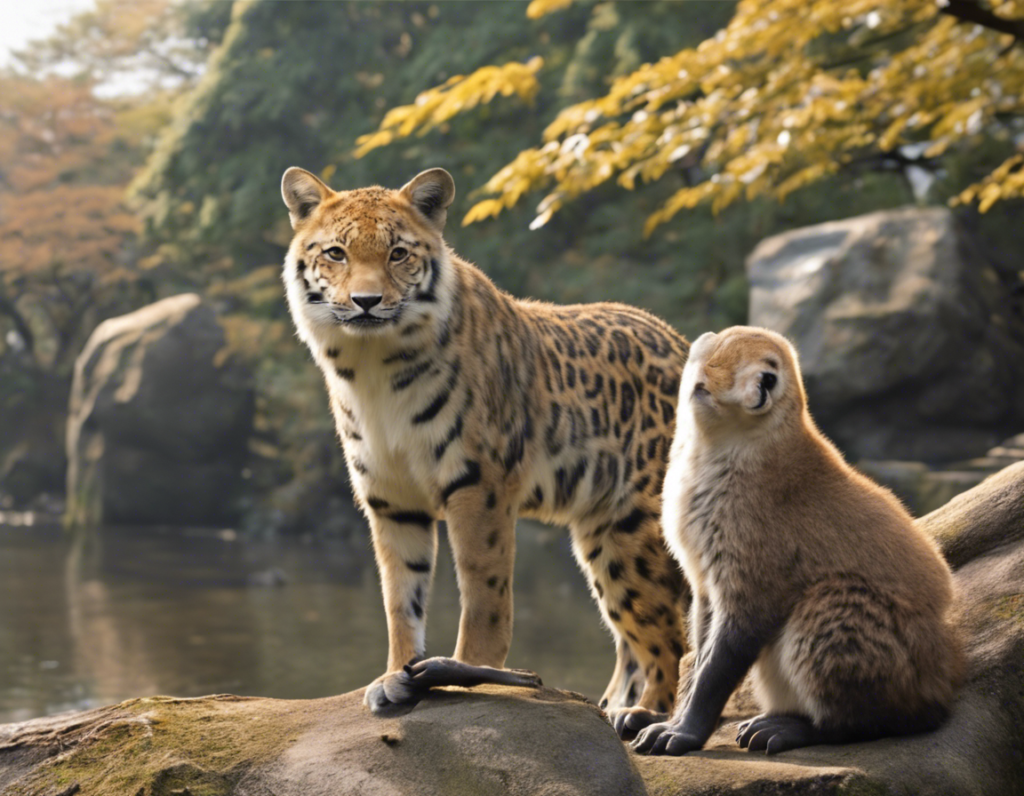
-
Visit Parks: Explore Tokyo’s numerous parks, such as Yoyogi Park, Ueno Park, and Shinjuku Gyoen, where wildlife is more likely to be spotted.
-
Be Quiet and Patient: Wildlife observation requires patience. Move quietly and be aware of your surroundings to increase your chances of spotting animals.
-
Respect Nature: Always observe wildlife from a distance and avoid disturbing their habitats.
Tokyo’s wildlife is a fascinating aspect of the city that often goes unnoticed amid its bustling urban life. From playful tanuki to soaring birds, the city’s parks and natural areas provide a glimpse into the rich biodiversity that exists within this metropolis. Whether you’re a nature enthusiast or simply curious, exploring the wildlife of Tokyo can add a unique dimension to your visit.
Travel Tips for Tokyo
Traveling to Tokyo can be an exciting adventure filled with unique experiences and cultural insights. To help you navigate this bustling metropolis, here are some essential travel tips that will enhance your visit and ensure a smooth experience.
1. Keep Cash on Hand
Japan is still largely a cash-based society, so it’s important to carry yen with you at all times. While credit cards are accepted in many places, smaller shops, restaurants, and public transport may only accept cash. You can find ATMs at convenience stores like 7-Eleven, which typically accept foreign cards.
2. Use Public Transportation
Tokyo boasts one of the most efficient public transportation systems in the world. The JR Yamanote Line is a convenient loop line that connects major districts, while the Tokyo Metro offers extensive coverage of the city. Consider getting a Suica or Pasmo card for easy travel on trains and buses. These rechargeable cards can be used throughout the city and make commuting hassle-free.
3. Download Helpful Apps
Before your trip, download useful apps like Google Maps for navigation and Google Translate for overcoming language barriers. The Google Translate app can translate text and even written menus using your camera, making it easier to communicate and understand local cuisine.
4. Wear Comfortable Shoes
Tokyo is a city best explored on foot, so be sure to wear comfortable walking shoes. You’ll likely find yourself walking a lot while exploring neighbourhoods, parks, and attractions. Comfortable footwear will make your experience much more enjoyable.
5. Respect Local Etiquette
Understanding and following local customs is important in Japan. Here are a few key etiquette tips:
-
Walking Etiquette: In crowded areas, such as Shibuya Crossing, people generally walk on the left side of the sidewalk. On escalators, stand on the left to allow others to pass on the right.
-
Trash Disposal: Public trash bins are rare in Tokyo, so be prepared to carry your trash with you until you find a place to dispose of it properly.
-
Tipping: Tipping is not customary in Japan and can even be considered rude. Exceptional service is expected, and the price you pay is considered the total cost.
6. Plan Your Itinerary Wisely
Tokyo is filled with attractions, so planning your itinerary can help you make the most of your time. Popular sites include:
-
Senso-ji Temple: Tokyo’s oldest temple located in Asakusa.
-
Meiji Shrine: A tranquil shrine surrounded by a beautiful forest.
-
Tokyo Tower: An iconic landmark with stunning views of the city.
Arriving early at popular attractions can help you avoid crowds and ensure a more pleasant experience.
7. Make Reservations for Restaurants
Many of Tokyo’s top restaurants require reservations well in advance, especially Michelin-starred establishments. If you have specific dining spots in mind, consider booking your table through your hotel concierge or directly via the restaurant’s website.
8. Stay Connected
Free public Wi-Fi is not as common in Tokyo as in some other cities. Renting a portable Wi-Fi device can keep you connected throughout your trip, allowing you to navigate and stay in touch easily.
9. Explore Beyond the City
While Tokyo has plenty to offer, consider taking day trips to nearby attractions such as:
-
Nikko: Known for its stunning shrines and natural beauty.
-
Hakone: Famous for hot springs and views of Mount Fuji.
-
Kamakura: Home to historic temples and the Great Buddha.
These excursions can provide a refreshing break from the city’s hustle and bustle.
10. Embrace the Culture
Finally, immerse yourself in Japanese culture by participating in local experiences. Consider taking a sushi-making class, attending a tea ceremony, or visiting a traditional onsen (hot spring). These activities will deepen your understanding of Japanese customs and enhance your overall experience in Tokyo.
Conclusion
With its rich culture, delicious cuisine, and efficient transportation, Tokyo is a city that offers a wealth of experiences for travelers. By following these travel tips, you can navigate the city with ease and fully enjoy everything it has to offer. Whether you’re exploring historic temples, indulging in world-class sushi, or simply soaking in the vibrant atmosphere, Tokyo promises an unforgettable adventure.
Sampling sushi in Tokyo’s Tsukiji Market is just the beginning of an unforgettable adventure. With a rich history, vibrant nightlife, and a plethora of activities for couples and families, Tokyo is a city that promises to captivate all who visit. Whether you’re indulging in fresh sushi, exploring top restaurants, or enjoying family-friendly attractions, Tokyo has something for everyone.




